
Back to Loco of the Month homepage
Back to Sidestreet Bannerworks
.
February 2006
British 0-6-0T
by Marc Horovitz

This is a model of a British, standard-gauge 0-6-0T, perhaps patterned after a Lancashire & Yorkshire Railway class 23 (thanks to Dan Crow for this info).
The model
As a model, this is a most interesting specimen. It is obviously scratchbuilt. Its builder is unknown (if you know, I'd like to hear from you), as is its age. It appears to be based on one of LBSC's designs, the "Chingford Express," as published in Model Engineer in 1944. This was intended to be a "quickie" project. However, the Chingford Express, as published, was a side-tank engine, while this one is clearly a saddle-tanker. Other details adhere closely to the Chingford Express drawings, though.
The mechanical parts of the engine are fairly well made. It has a single cylinder between the frames, controlled by a D-valve. Reversing is via a slip eccentric on the middle, crank axle. An interesting feature is the lack of a cylinder lubricator of any sort. The steam line passes directly from the regulator to the valve chest.
The boiler is a Smithies with water tubes, fired by a four-wick burner fed by a fuel tank under the footplate. The burner/fuel tank can be quickly removed by extracting a pin that passes through the frames and the tank, thus securing it. A filler port for fuel is on the footplate in the cab.
Boiler fittings include a safety valve, a filler plug, a regulator valve, and a blower. There is no pressure gauge or water glass. To raise steam, a fan is required. You can judge whether steam is up by tweaking the safety valve.
The sheet-metal work -- tank and cab -- are somewhat less well done than the mechanical bits. They are made of thin sheet metal and are rather crudely formed. A lift-off dome, which conceals the filler plug, adorns the saddle tank. The entire engine was hand painted gloss black with a broad brush. The numeral "5" and "L.Y" appear on the cab sides, surrounded by red lining. There is little detail aside from the non-functional smokebox door and unsprung buffers.
Did the builder design this engine, or was it built to published drawings? Just more questions that I hope might be answered.
The run
The day of the initial run was clear, still, and cool, with the temperature in the mid 40s. I oiled the engine all around and filled the boiler and burner with their respective fluids. Then I stuck a fan in the stack and lit the four wicks. Pressure came up very quickly, perhaps in three or four minutes. I opened the blower and gave it a little more time. The safety started sputtering, at what pressure I have no idea. I closed the blower, opened the throttle and gave the engine a shove, not knowing what to expect. Water shot out of the stack for a few revolutions as I pushed the engine forward and back. Then the cylinder cleared and the engine gave a lurch. With some encouragement, it continued to lurch ahead. It ran steadily and strongly, but always with a pronounced lurch. Something was definitely amiss; the obvious thing to check was valve timing.
I let the engine run until the fuel was exhausted. Performance was about the same in either direction. When cool, I took it down to the bench and had a look at it. Yup, the eccentric appeared to be off a few degrees. I loosened the set screw and repositioned the eccentric so that it was 90 degrees out from the drivers. A trial run on air suggested that things were better.
The second run also took place on a clear, cool day, but in a howling gale. I prepared the engine and lit it up in the shop. Once steam was up (again, very quickly), I took the loco out to the track. When the safety started sputtering again, I closed the blower and opened the throttle. Water again jetted out the stack, but quickly cleared. When pushed, the engine moved smoothly ahead, with a loud, sharp exhaust beat. Running light, it was very lively.
I coupled the engine to a train of vintage wooden wagons. These had couplers of prototypical length, which meant that the sprung buffers on each wagon were actually engaged with those of its neighbor. I didn't know how these would behave on my railway, but they behaved very well indeed. They calmed the engine down considerably and turned it into a strong, sedate runner with an even louder exhaust beat. Given the four wicks and the relatively small fuel tank, the run was fairly short, but successful. Given the weather, I was happy not to refuel, but get back to the warmth of the shop.
|
|
|
| Builder | Unknown (Built to LBSC's "Chingford Express" design) |
| Date built | Unknown |
| Gauge | 1 (45mm) |
| Scale | 1:32 |
| Boiler | Internally fired, Smithies |
| Fittings | Safety valve, throttle, blower, filler plug |
| Fuel | Alcohol |
| Blow-off pressure | Unknown |
| Cylinders | One, double-acting D-valve |
| Reversing gear | Slip eccentric |
| Lubricator | None |
| Weight | 4 lb., 4 oz. |
| Dimensions | Length, 9-1/2"; width, 3-1/4"; height, 5" |
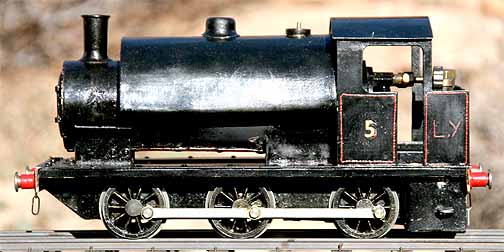
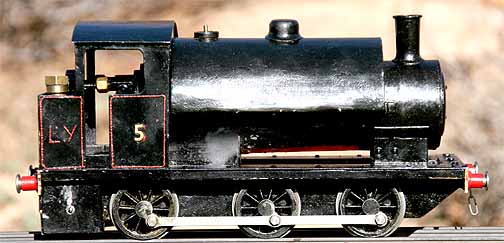
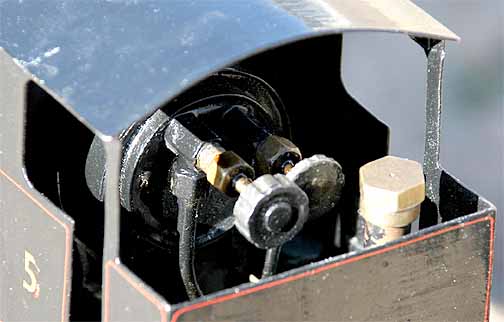
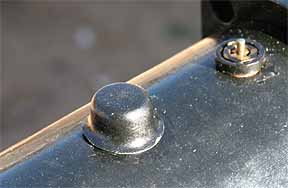
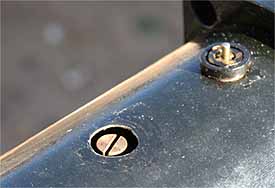
.
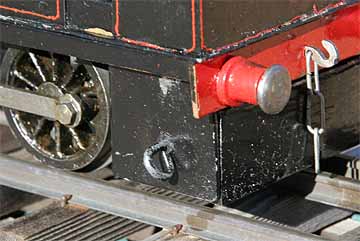


Below: With a train of vintage wooden stock of unknown manufacture (Bassett-Lowke?), the 0-6-0 proved strong and reliable, with a delightfully loud exhaust beat.

Back to Loco of the Month home page
Back to Sidestreet Bannerworks home page
This page and its contents
Copyright Sidestreet Bannerworks, 2006
.